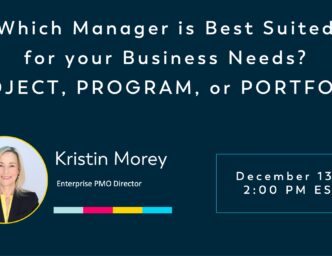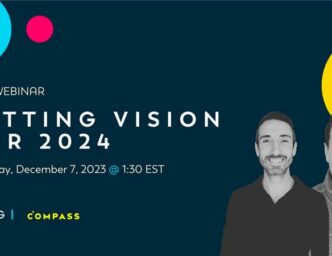Professional development and changing career paths is on a lot of minds these days. Corporate America has experienced the Great Resignation over the last couple of years, when an average of around four million workers quit their jobs each month, according to the Bureau of Labor Statistics. That’s the highest rate on record. Businesses occasionally deal with high attrition rates, quiet quitting, and other issues that lead businesses to struggle to fill certain positions and keep people in in the company walls.
But there are many staffing solutions to be found. Retaining current employees is one of them. How do you do that? Create a clear path to advancement for your employees through a career path or promotion plan.
Internal Promotions Are Key for One’s Career Path
Internal promotion is straightforward term: management prepares and develops internal team members for advancement as part of their career path – often rather than giving a position to an external hire. This process supports your current talent needs while also allowing top talent to make career moves without leaving the company. These promotional paths may be part of a larger plan for the company or specific to the employee and needs of the business.
Promoting from within is a proven method for strengthening your organization. It may also lead to some cost savings. According to a report by the BLS, the average annual turnover rate is around 50 percent across all industries, which includes both voluntary and involuntary turnover. Losing more than half of your team means spending a lot of time on staffing and hiring rather than running your business and growing your bottom line. And, for example, the average cost-per-hire to fill a role in the healthcare industry is around $3,000–and that’s just to get them in the door.
We’ll also get into the types of promotion plans, and how you can implement them to maximize success in an employee’s career path.
Types of Promotion Plans
There are two main tiers of internal promotions:
- Using existing talent to fill senior or leadership roles, or
- Retaining talent by allowing flexibility to shift roles — even if that is cross-team or cross-department.
Both of them help keep employees on a career path that fits their needs and desires.
When these promotion plans are executed, they are typical done in two ways: vertically or horizontally. There is another type of promotion called a dry promotion, but that is a far less common method (and isn’t really a good long-term solution).
Vertical Promotions
A vertical promotion is a promotion in what you probably think of as the most traditional sense. One’s job title, salary, and responsibilities all change or increase. These typically occur when an employee is moving up within a single department or division as they progress on a natural career path. The employee may begin at entry level and work their way up toward a more senior roles in their area.
In some situations, a vertical promotion means stepping into a leadership position, where the employee had previously been an individual contributor with no direct reports. This causes a clear shift in responsibilities, as the employee will now be managing others. They will likely delegate tasks or projects rather than produce themselves, or they will move into a blend of managing and producing.
There are also vertical promotions within leadership. In this case, the employee. will shift into a position of more senior leadership. They may gain more direct reports or even preside over an entire department or division. This type of promotion would also provide them with more authority to make executive decisions regarding team structure or strategy.
However, vertical promotions do not necessitate leadership. The employee could step into a role where they remain an individual contributor, but they have increased workflow or higher authority and engagement on certain projects.
Horizontal Promotions
Horizontal promotions are more nuanced than vertical promotions. They are not restricted to the career paths or trajectories. Additionally, they do not imply an increase in title, salary, or responsibilities. Any of those have the potential to increase following a horizontal promotion, but they are not expected.
There are cases where the employee gains a new title or increased compensation as an acknowledgement of quality performance, but their responsibilities do not increase. This qualifies as a horizontal promotion. In this way, horizontal promotions may follow a similar path to some vertical promotions in terms of title – from junior, to middle, to senior management. For example: junior analyst to analyst to senior analyst.
While they may occur within a single team, horizontal promotions can also be cross-divisional where they move to a new department or section of the company.
Dry Promotions
Dry promotions, on the other hand, are referred to less frequently because it is often not considered a true promotion. It is defined by increased responsibilities and a new title without an increase in compensation. Consider the previous example of moving from junior analyst to senior analyst. With a dry promotion, an employee might receive a new title and responsibilities, but not additional compensation.
Dry promotions are likely to happen when companies lose a senior team member or there is unexpected churn, and leadership needs to backfill a role to keep things running.
While these events can be unavoidable, dry promotions are not seen by many in HR as a strong solution. Increased compensation to match the additional responsibilities that come with the title are acknowledgements of quality work and more responsibilities. If the latter occurs without the former, morale will decline and trust may be broken. Employees who do not see themselves as valued could begin to feel undervalued and may even start to search for opportunities elsewhere.
Why Career Paths Are Important to Employers and Employees
Promotion plans are a core part of developing an employee’s career path. An investment in your staff is an investment in the future of your organization. Beyond development, though, promotion plans can help maintain company culture, reduce future recruitment costs, provide quality assurance, and allow you comfort in knowing your senior staff and leadership.
Quality Assurance
Promoting employees from within is ideal because this person already works for your organization. They know best practices, company structure, and the culture. And you know their work ethic. You know their track record, their strengths, and how they fit into your team.
When you fill a position by promoting someone within your organization, you’ve seen how they handle the workload and deadline pressure in real life, and can better predict future success than you might be able to with a new candidate in the interview process.
Company Culture
Knowing your employees have a career paths benefits company culture in a few ways. Promoting existing employees into senior positions or leadership is a strategy for protecting and upholding your company culture.
Since promotion plans can be seen as an investment in your people, they may also want to invest their time and energy in your company and their future success.
You can also consider it an incentive. When people see potential for growth, they’re far more motivated to put in time and effort or go above and beyond. The same can’t be said for individuals who feel their role with the company has no clear future. According to a Pew Research survey, 63% of Americans left their jobs citing “no opportunities for advancement.”
Your employees will feel valued and driven, and they’ll generally be happier to work in a place that’s supporting them in their career path. Promotion plans, and the opportunity to build and expand a future with their company, is a morale booster. By promoting from within, you’re setting your company up for stellar employee retention rates.
Reduced Recruitment Costs
Benefits of internal promotion plans and keeping employees on a path upward aren’t solely psychological – they’re cost efficient too. In a world where time is money, do you really want to spend yours sifting through resumes and LinkedIn profiles?
You could spend hours considering role and culture compatibility, examining skillsets, calling references, and looking for mutual connections. Or you could take a look at the rich candidate pool that exists within your own organization. You’ve already vetted them. Why not maximize on a previous investment?
On top of the time that you’re pouring into a talent search, replacing an employee externally can cost up to six to nine month’s salary on average. That includes recruitment, training, and onboarding costs. And never forget the value of institutional knowledge.
Tips for Developing a Career & Promotion Plan
Where do you begin to create a plan for your employees’ professional development and career path? We’ve laid out a four-point plan below that will get your started.
1. Assessment: Start Pre-Planning!
As with most plans, there needs to be a clear finish line – based on personal, professional, ad business goals, what career path makes sense for this employee? What path makes sense for someone in this role, in general? What additional support or training will they require? How will they fit into the future of your business? What would an ideal transition to new roles look like? Transparency is key here.
Assess the needs of your team and your business from two points of view:
- Assessing the individual: their performance, their ambitions, their strengths, their training needs, and their goals. You wouldn’t make a business plan without gathering contextual information or conducting research. Promotion plans should receive the same attention.
- Assessing the organization: consider your current team, business requirements, structure, and future processes or needs. What will anyone looking to be promoted (across your entire organization) need to have access to so they can forge their path up?
2. Identification: Ask the Right Questions!
Now that you’ve done some reflecting, how can you use that knowledge? Nail down the specifics and how you can really get to the nitty gritty of how to train, develop, and promote your employees. Determine current baseline, and then determine any action that needs to be taken plus your timeline, budget, and how you will track success.
3. Collaboration
A promotion plan should be a two-way conversation with the employee and employer. When employees are excluded from the planning process, they may feel like their personal and professional goals are less important to the organization
Trust your employees’ insights. Give them the opportunity to weigh-in on strengths, weaknesses, and the overall big picture goals for themselves.
4. Planning and Execution
This is what the previous three phases have been building toward: a thoughtful and strategically crafted promotion plan. A plan that you stand by, and one that engages your team and sets them up for success.
No two people are exactly the same, so be mindful of flexibility in the planning phase. Training that works for one, may not work for all – that applies to roles, too.
- Determine current company needs: where are the openings for potential promotions?
- Assess the internal talent: who stands out to you as a good fit for internal opportunities? What training will internal talent needs to be ready if they aren’t now?
- Consider compatibility: how well do skillsets align with the role(s)?
- Engage: start the conversation, see if there’s interest from your employees in the roles you have in mind, and ask what else they may be interested in.
- Assess, identify, collaborate, plan: once you’ve got your team and your needs aligned, it’s time to get to work.
- Check in and follow up: a promotion plan is more than the initial set up and the end result. It requires consistent check points and maybe even milestones.
There is so much value in creating opportunities for internal promotions and promotion planning for employee advancement. This type of business mindset lends itself to immense benefits for you, your business, and the people who keep it going. Commit yourself to being a partner and a mentor to your employees – invest in your company’s future by investing in your people’s future.
Need Help Hiring Employees?
Let us know what position you're trying to fill, and we'll have qualified candidates ready for you in as little as two days. Questions? Call us toll-free: 855-485-8853


 by Rie Parker
by Rie Parker



 by Brita Long
by Brita Long 

